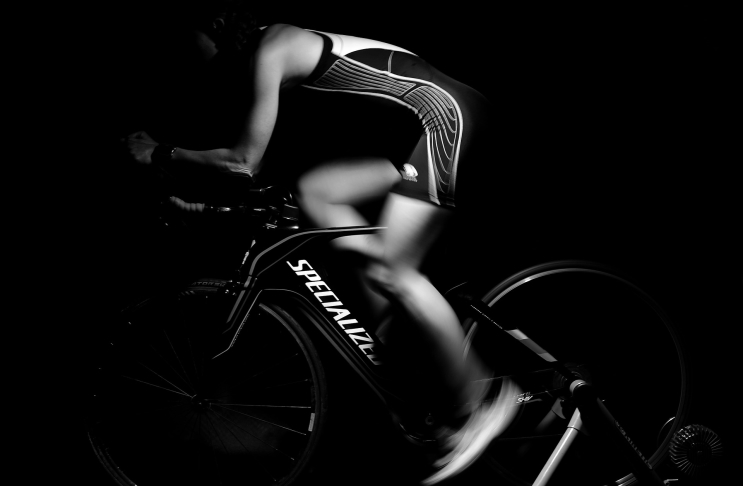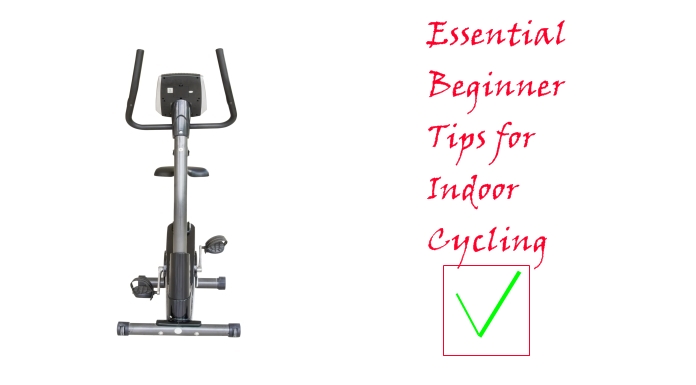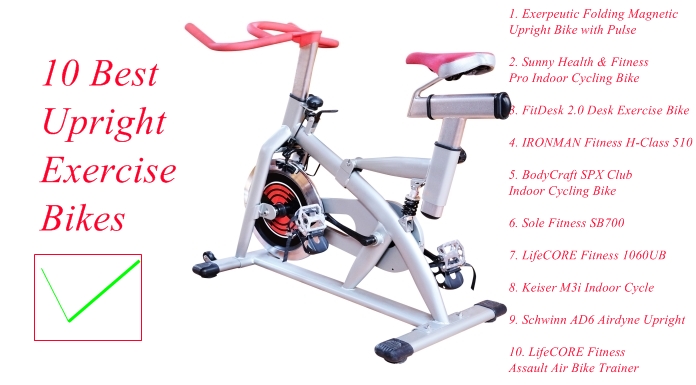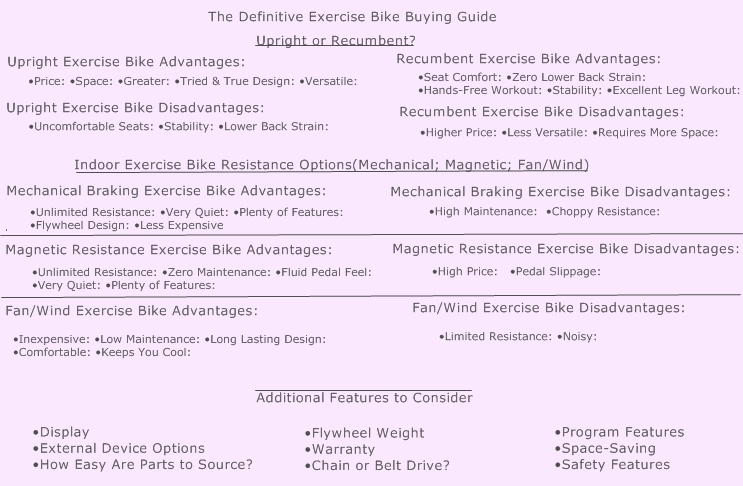An indoor bicycle trainer can offer years of service, keeping you out of the cold and away from rain, snow and ice on the less than favorable days or months.
Bike trainers are also excellent to own if you live in the middle of a busy urban environment and can’t always get out of the city and onto safer roads during the work week.
The biggest consideration when buying a bike trainer, in addition to the reputation of the brand you end up going with, is the resistance type offered.
There are 3 essential types of trainers available, with a 4th option if you’re a competitive rider.
Resistance Types:
1. Fluid Bike Trainers
Fluid trainers are at the top of the heap in the world of bicycle trainers. They provide the most “real world” ride quality, and are quiet when in use. They’re not cheap. Plus, less expensive brands that haven’t been tested by the cycling community aren’t worth taking a chance on if you want to get the most for your money.
Fluid bike trainers are filled with medical grade silicone that creates resistance via an internal impeller which’s comfort-balanced using an external flywheel.
Medical grade silicone remains stable at the high temps created by friction when using your trainer. The easiest way to tell the quality of the fluid inside is if the resistance of the trainer starts to wane as it heats up from use. A quality fluid trainer will offer consistent resistance even after years of use.
The best brands use a magnetic sealing design to keep the fluid inside, rather than rubber gaskets. Rubber gaskets are known for failing in a number of ways. Make sure you know what you’re buying or you’ll have a leaking trainer sooner rather than later!
Fluid trainers are the best of the best for competitive and/or aggressive cyclists who want to mix it up on their home trainer just like they would out on the road. A quality designed unit will allow you to hammer down on the pedal whenever you like, allowing you to simulate standing up for an epic hill climb or a race to the finish at the end of a 25 mile race run.
Fluid Trainer Advantages:
• Progressive, dependable resistance that increases with the rider’s intensity level.
• Can last for millions of stationary miles on the bike.
• Provides perhaps the best road feel of all trainer types in terms of resistance.
Fluid Trainer Disadvantages:
• Expensive compared to other resistance types.
• If you go cheap, expect leaks and/or poor performance as the unit heats up.
Don’t go cheap with a fluid trainer. If you’re looking for progressive resistance on a budget and don’t mind the noise, choose a wind trainer if you can’t afford a top-notch fluid unit.
Best Fluid Bike Trainers
 |
 |
 |
|
| Kinetic Road Machine 2.0 Fluid Trainer | CycleOps Fluid2 Indoor Trainer | CycleOps Jet Fluid Pro Trainer | |
| View on Amazon | View on Amazon | View on Amazon | |
| Overall Rating | 5 / 5 | 5 / 5 | 4.8 / 5 |
| Durability | 5 / 5 | 5 / 5 | 5 / 5 |
| Quality | 5 / 5 | 5 / 5 | 5 / 5 |
| Performance | 5 / 5 | 5 / 5 | 5 / 5 |
| Features | 5 / 5 | 5 / 5 | 5 / 5 |
| Price/Value | 5 / 5 | 5 / 5 | 4. 5 / 5 |
| Warranty | Lifetime | Lifetime | Lifetime |
2. Magnetic Bicycle Trainers
Cycling enthusiasts also call these “mag trainers.” They don’t really offer a true road-riding experience like you’ll get with a fluid trainer or wind trainer; nor do they offer the balance training you’ll learn about later that’s offered by a roller trainer. They do, however, offer near unlimited resistance options (i.e., few riders will ever be able to handle the “max” setting on any quality mag trainer).
Unlike the progressive, adaptable resistance of the fluid or wind trainers, mag bicycle trainers require the rider to adjust the resistance manually. Better units will have a cable operated lever in an easy-to-reach place, whereas cheaper units will require the rider to dismount to make changes.
This type of bike trainer offers a technology called Eddy Current Braking. Essentially, a magnetic current is inducted into a flywheel, creating resistance to the rider as they pedal. While this type of resistance is reliable and consistent, it only favors those who ride at a predictable pace.
This is the biggest drawback to a bike trainer if you’re an aggressive rider that likes to mix up the intensity while training at home. While a fluid trainer or wind trainer’s resistance increases exponentially as you pedal harder, a mag trainer can fall out of sync if you get too aggressive and try to punch it all of a sudden.
For example, say a rider decides to stand up on the bike and really put some heavy torque to the pedal all of a sudden, such as they would when encountering a hill or sprinting to the finish line in a road race: in this type of scenario, a magnetic bike trainer can fail – allowing the flywheel to break free from the resistance current.
Any experienced rider who’s ever had a chain break on their bike just as they were ramping up the intensity knows what happens next. Man or woman, it’s going to hurt a lot! This isn’t a knock against magnetic bike trainers though. If you’re just looking for consistent, predictable and virtually unlimited resistance, this type of trainer is perfect.
Magnetic Trainer Advantages:
• Less expensive to purchase than a fluid trainer.
• Offers an intense, heart pumping workout every time you use it.
• Flywheel bearings are the only wearable parts – the flywheel can last virtually forever if it’s well designed.
Magnetic Trainer Disadvantages:
• Pedal resistance is linear and requires the rider to manually change the resistance.
• Doesn’t allow for sudden, explosive pedaling-intensity changes.
Always read reviews from real cyclists when entertaining a specific brand or unit. Less expensive units may well offer the same resistance of their pricier counterparts, but they aren’t likely to last as long either.
Best Magnetic Bike Trainers
 |
 |
 |
|
| Kinetic Road Machine Bicycle Trainer | CycleOps SuperMagneto Pro Trainer | RAD Cycle Indoor Bicycle Trainer | |
| View on Amazon | View on Amazon | View on Amazon | |
| Overall Rating | 5 / 5 | 5 / 5 | 4.5 / 5 |
| Durability | 5 / 5 | 5 / 5 | 4.5 / 5 |
| Quality | 5 / 5 | 5 / 5 | 4. 4 / 5 |
| Performance | 4 / 5 | 4 / 5 | 4.0 / 5 |
| Features | 5 / 5 | 5 / 5 | 4.5 / 5 |
| Price/Value | 5 / 5 | 5 / 5 | 5 / 5 |
| Warranty | Lifetime | Lifetime | Lifetime |
3. Wind Bicycle Trainers
Most experts will tell you to choose a fluid or magnetic trainer over a wind bike trainer. When speaking from purely a noise perspective, this is perfectly fine advice. However, if noise isn’t an issue and you’re looking for a somewhat realistic pedal resistance on a budget, they’re a perfectly fine choice.
Their simple design means they’ll probably never break. The flywheel bearings can go of course, but even the best low end brands will use quality sealed bearings made to last for millions of miles. Overall maximum resistance is limited, but this makes them great for beginners and intermediates.
If you’ve ever had a chance to use a Concept2 or similar wind resistance indoor rowing machine, wind bike trainers work off the same principle. Once your bike is mounted, the rear tire drives an impeller that catches the wind as it spins. The harder you pedal, the more resistance you’ll be met with.
Unfortunately, compared to the unlimited resistance offered by the fluid or mag trainers, wind trainers do have a point of diminishing returns if you’re an aggressive rider. Anyone who has ever used this type of trainer knows there’s a fine line that exists as the intensity increases.
Once you get the impeller spinning at a very high speed, the resistance flatlines. Consider what happens when you’re careening down a large hill: even with the gears set on the lowest setting, the speed of the bike won’t allow you to accelerate the bike any faster using the pedals.
This is similar to what happens on a wind trainer – you’ll still get tons of resistance leading up to this point, but if you’re in great cycling shape you might find your workouts quickly become limited for your needs.
As you’ve already learned, noise is the biggest complaint about a wind trainer. They’re really loud and considering that the noise level is in direct proportion to the resistance offered at the pedal, it’s a necessary evil. If you’re looking for a decent workout, expect to wear ear protection rather than “earphones” for listening to music with.
Wind Trainer Advantages:
• Offers plenty of progressive resistance.
• Bulletproof, simple design means they have the best track record in durability.
• Low price compared to other types which can often be a barrier for budget-minded cyclists.
• Bonus: the wind they create means you won’t need a fan nearby to keep you cool.
Wind Trainer Disadvantages:
• Noise! Some higher end brands might claim to be quieter, but it’s unlikely you’ll agree once you start using one.
• Point of diminishing returns when it comes to resistance. They offer plenty, but may disappoint those who’re in great shape and regularly cruise the road at speeds exceeding 35 mph.
Paying top dollar is less of a concern with wind trainers. Brand quality is a different story. Read reviews and look for problems like poor bearing performance and/or weak frame build quality.
Best Wind Bike Trainers
 |
 |
|
| CycleOps Wind Bicycle Trainer | Kinetic Cyclone Bike Trainer | |
| View on Amazon | View on Amazon | |
| Overall Rating | 5 / 5 | 5 / 5 |
| Durability | 5 / 5 | 5 / 5 |
| Quality | 5 / 5 | 5 / 5 |
| Performance | 3 / 5 | 3 / 5 |
| Features | 5 / 5 | 5 / 5 |
| Price/Value | 5 / 5 | 5 / 5 |
| Warranty | Lifetime | Lifetime |
4. Mechanical Rollers
There isn’t much the average rider needs to know about mechanical roller bike trainers. This type of trainer isn’t for people looking for a cardiovascular workout. Instead, competitive racers use roller trainers to practise their balance and handling while on the bike.
There is no resistance offered, but the fact that the rollers allow side-to-side travel of the rear wheel makes it necessary for the user to engage their core muscles and hips similar to that which they’d do while riding.
A mechanical roller trainer should be used alongside one of the other trainers already discussed. If you have no competitive aspirations, don’t allow yourself to be tempted by their low price as an alternative to fluid, mag, or wind trainers. You’ll be sorely disappointed!
Best Roller
 |
Kinetic Z Roller View on Amazon |
| Overall Rating | 5 / 5 |
| Durability | 5 / 5 |
| Quality | 5 / 5 |
| Performance | 5 / 5 |
| Price/Value | 5 / 5 |
| Warranty | Lifetime |
Features to Consider:
Practicality
First on the list of considerations needs to be the practicality of the trainer you’re planning to buy. Does it require any routine maintenance to keep its moving parts in good working order?
And perhaps most important for most riders: Is it easy to get the bike in and out of the trainer? In the winter months, this might not be a consideration if you live in a cold, snowy area and plan to leave your cycle attached. Otherwise, you’re going to want to hit the road with your bike eventually and ease of assembly/disassembly will become a factor.
Noise
If you have neighbors close by or plan to be training at times when you can disturb your family, this is an important factor.
A wind trainer will be loud if you’re training indoors or in an attached garage. Rollers can be pretty loud too, though much less than a wind trainer if you’re training a room or two away from people who don’t want to be disturbed.
Resistance Offered
As you’ve learned, fluid and mag trainers offer the highest resistance options. Wind trainers offer excellent and progressive resistance too. Roller trainers offer none and should be avoided unless you’re a competitive cyclist doing balance training.
Durability
With a fluid trainer, durability is in direct proportion to price. Go cheap and you’ll regret the purchase sooner rather than later.
With other types of trainers, buying the most expensive option might not get you a more durable unit. Whereas the very cheapest brands could still malfunction after a month or two. Reading reviews on cycling forums and from Amazon “Verified” purchases will give you a good idea of how durable a given bicycle trainer is.
Price/Value
If you’re just looking to do a few rides a week during the cold months, you might not care about buying the best of the best. However, the warranty offered by the company and their reputation for honoring that promise should still be a factor in your decision.
And warranty, depending on the type of trainer style and brand you choose, will often be somewhat price-dependant. Don’t buy anything that doesn’t have at least a 1 year manufacturer’s warranty, regardless of your indoor cycle training needs.
Conclusion:
Which style and brand you choose in a bicycle trainer will mostly come down to personal preference.
Most competitive cyclists will go straight for a high-end fluid trainer, coupled with a roller trainer for balance and handling practice.
A casual cyclist looking to stay in shape during the winter months and dry on the rainy days may be just as happy with an inexpensive magnetic or wind trainer.
The rest of you may be looking for the most inexpensive way possible to turn that old bike in your garage into a stationary bike for your home gym.
Hopefully, after reading this, you’ve learned enough about each design type to make the choice that’s right for your personalized training needs.




